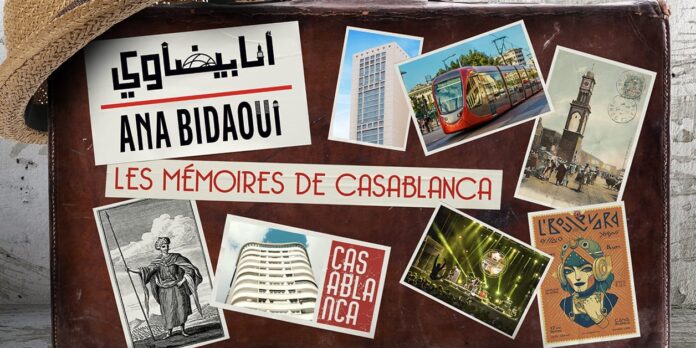Responding to a call for projects from channel 2M, the documentary series “Ana Bidaoui”: On the rediscovery of Casablanca, produced by Ali'n Productions sheds new light on the city of Casablanca for viewers. Written by Rita El Quessar and directed by Nour-Eddine Lakhmari – after her now cult film Casanegra –The saga is divided chronologically into four episodes of fifty-two minutes each that tell the often little-known story of this urban monstrosity, whose urban expansion is mistakenly associated with the colonial period.
“Noisy and ugly city”
The series is broadcast every Sunday at 10pm from June 4th in the Stories and Men section on Channel 2 Moroccan. Its first episode was shown on May 30, at the Arab League Park, in front of an assembly of personalities from the political scene or cultural world of the “white city”.
Now available on YouTube and with almost 30 thousand views, “Ana Bidaoui” trace the origins of this ancient city developed around a strategic port. While the second episode covers the French protectorate to the beginnings of the National Movement, and addresses the city's influence in terms of urbanism; the third, the period of independence from the golden age to the leaden years; and, finally, the fourth, the city in the present as perceived by its own inhabitants.
It is a mix of genres, combining unpublished files, testimonies and the narration of a fictional character as a narrative thread.
At the origin of the project: a woman from Casablanca who questions herself about her origins and the history of the city she saw born. “Initially we wanted to respond to the channel’s desire to produce a documentary that highlighted Moroccan heritage”, explains the screenwriter. But instead of offering a classic film about one of the imperial cities, choose to portray this “unloved, noisy city, which the Casablancais themselves describe as ugly”. She is confident that she finally “had a passion for [her] own story.”
Declaration of love
It took three years of work mandatory to make this documentary, between research, writing, filming and editing. The result is a mix of genres, combining unpublished archival documents, expert testimonies and the narration of a fictional character, as a narrative thread.
“I also come from fiction”, explains Rita El Quessar. “So naturally, I wanted to offer a fictional documentary. That's why with Nour-Eddine Lakhmari we implemented an original process to combine my intentionally personal setting with your very particular aesthetic sense, which lies in particular in particular. Casanegra. He is one of the few, with this film, who showed the dark side of this city. »
It is, therefore, through the childhood memories of this imaginary protagonist, the only actor in the series, and his achievements when he confronts his own prejudices in relation to his hometown that we go back in time. From the first prehistoric remains, to the bombing of 1907, passing through the pirate past of the ancient “Anfa”, architects, archaeologists, historians and other enthusiasts tell Casablanca with a tenderness that can be heard in their voices.
“But this film has no didactic or scientific intentions. It's a declaration of love in Casablanca. “, proclaims Rita El Quessar. Those who accuse the film of idealizing “a trash city” respond that it is “a necessary work of memory”, but above all the opportunity “to to dream yes indeed.”

